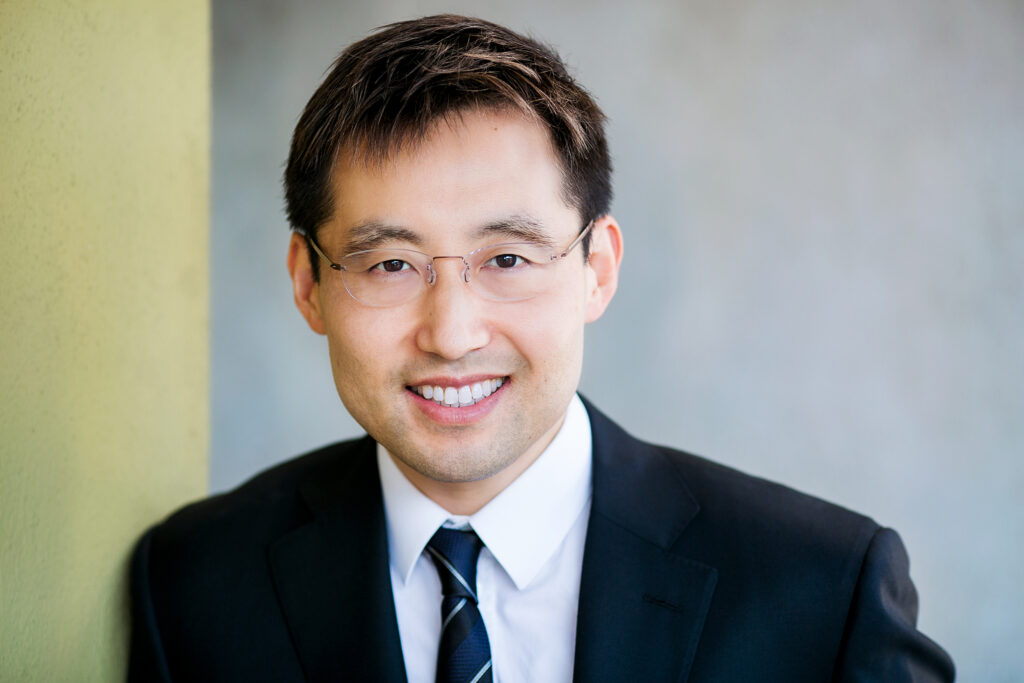Why awake surgery is preferred for certain gender-affirming surgeries
If you are planning on undergoing gender-affirming surgery, you might want to consider this aspect of surgical procedures. Expert Dr. Kenneth Kim offers some advice.
Of the nearly 1.6 million transgender people in the United States, roughly 48,000 undergo some form of gender-affirming surgery every year. These surgeries range from facial transformation to chest/breast gender confirmation surgeries (better known as “top surgery”) to genital reconstruction.
Many transgender individuals may opt for multiple surgeries in hopes of achieving the look and affirmation they are after. While side effects from multiple surgeries in any case are rare, consistent instances of going under general anesthesia can place patients under increased risk of complications.
Our practice has pioneered an advanced approach to surgery that allows patients to remain awake and alert during surgical procedures. While weighing the risks associated with general anesthesia and learning about the benefits of awake surgery, those seeking gender affirming care may come to find that awake surgery could be the safest and most appropriate route for their procedure.
Surgical procedures for gender affirming care
The gender affirming procedures I perform include facial feminization surgery and breast augmentation. Chest gender confirmation surgeries are the most popular gender affirmation surgeries, with 56% of transgender individuals who have surgery opting for breast augmentation — either through implants or breast tissue removal. Facial feminization surgery (FFS) occurs in upwards of 13% of transgender procedures.
Facial feminization surgery is a popular option for male-to-female transgender individuals seeking a more feminine appearance to their chins, jawline, noses, and foreheads. Patients are seeking an overall smaller look to the facial features, as females tend to have narrower jawlines and cheekbones. Rhinoplasty comes into play as well. Women’s noses tend to be slimmer and more upturned than a man’s.
FFS also seeks to address the soft-tissue. When you narrow the bone structure of the face, sometimes that can cause the soft tissue to droop, aging the patient. It’s important with these types of surgeries that you focus not only on the feminization aspect, but also the youthful aspect. Because we want to address soft tissue and bone structure simultaneously, we often do narrowing and lifting procedures in one surgery.
With breast augmentation for gender affirmation, special care must be taken, especially for male-to-female transgender individuals. They do not start off with breast tissue, so there is no tissue to be used to hide any imperfections. The surgery must be precise, and your goal is to avoid any hardening of the implant, which will end up looking and feeling unnatural.
Because male-to-female transgender individuals do not have any medial or inner breast tissue, standard implants will result in a very wide, unnatural look. Wide-set implants with no medial cleavage are a tell-tale sign that someone has had gender-affirming breast surgery — which is not our goal. The goal is always a natural look, so we perform a special augmentation that seeks to medialize the breasts, bringing them more toward the middle.
The risks of general anesthetic
As one can imagine, these surgical procedures take a skilled hand and laser focus, but they also take time. When one is under general anesthesia, time is of the essence. The longer one is under, the higher the risk becomes for complications. In addition, studies have illustrated that certain general anesthetics increase the levels of toxic amyloid proteins in the brain — which research has shown lead to Alzheimer’s disease and other forms of dementia. These general anesthetics possibly prevent brain cells from repairing themselves, which can lead to memory loss and more significant brain damage.
There are many who fear “not waking up” when they go in for a surgical procedure, and this fear is not completely unfounded. There is a very real risk of over-sedation. In addition, the coma-like state produced by general anesthesia allows the patient to slip into a state of unconsciousness far deeper than normal sleep. This requires the surgical team to remain hyper-vigilant of the patient’s airway, as asphyxiation is a real risk with this level of deep sedation.
Blood clots are a significant complication that can easily occur under general anesthetic. General anesthetic can trigger vasodilation, or the widening of blood vessels. This widening causes blood flow to slow, increasing the risk for clot formation.
There are other complications that come with general anesthesia, like post-surgical dizziness, nausea, and constipation — all a nuisance to endure as you are trying to recover from a procedure.
With many of these gender-affirming surgeries lasting more than two hours, and with many transgender individuals having multiple surgeries, the chances of Alzheimer’s, memory loss, breathing complications, and other side effects are exponentially increased with each passing hour and each time they are put under for another procedure.
Realizing risk vs. reward
While I was training with some of the best surgeons in the world in South Korea, I came to understand that the risk of general anesthesia is not worth it for many procedures. In fact, by removing the general anesthetic aspect of some surgeries, you are removing the greatest risk overall. Gender-affirming surgery risk is relatively low, but that does mean there is no risk associated with general anesthesia for these procedures.
I knew there had to be a better way to approach the risk versus reward aspect of cosmetic surgery. Some form of anesthesia has been part of the surgical field for hundreds of years, and it has undergone very little advancement in the last century. If I could discover an applicable way to keep my patients safer, I knew it could revolutionize the cosmetic surgery field.
Considering awake surgery
An advanced awake approach to surgery could be exactly what those seeking these intricate gender-affirming procedures need. Awake surgery is surgery performed under local anesthetic, avoiding the possible complications of placing a patient completely under altogether. Local anesthetic — where the patient receiving the surgery is awake and alert — is safer and far less invasive than the general anesthetic approach.
When first describing the concept of awake surgery to someone, there may be some confusion. This is partly due to general anesthesia being the standard most surgeons “operate under” for these extensive surgical procedures. With education dissemination, however, more people can come to understand the myriad benefits of awake surgery.
The first question many patients may have is how the pain and anxiety associated with being awake during surgery will be managed. Slight anti-anxiety medication helps patients feel calm and serene, but fully awake and aware of their surroundings during the procedure. Local anesthetic numbs the area being worked on, so no pain is felt. In fact, because local anesthetic works directly on nerve endings affected during the surgery, those who participate in an awake surgery actually end up feeling less pain post-surgery overall than those patients who are put under.
In many cases, post-operative healing and pain management are also better. Many patients can get away with Tylenol to control their post-operative pain, rather than rely on heavy painkillers, such as opioids.
The risk of asphyxiation is nearly eliminated as well. Patients who are awake do not require a breathing tube, nor is there a need for such oversight by the surgical team on their airway. They are alert, breathing on their own, and even — in many cases — able to respond to the surgeon’s questions or commands. This particular benefit may be of special interest to those seeking gender-affirming surgery, as it allows them to actively participate in the surgical procedure, instead of being a passive, unconscious patient.
Taking the time for thorough transformation
Because facial feminization surgery and transgender-specific breast augmentations are very refined, specifically designed procedures, they take longer than the average cosmetic procedure to perform correctly. Every vessel must be sealed before you cut with the special breast augmentations. Where your average non-transgender specific augmentation may take 45 minutes to an hour, an augmentation for a male-to-female transgender individual could take up to two-and-a-half to three hours due to the precision required. The same stands for facial feminization surgery, where you are dealing with both bone reconstruction and soft tissue. The procedures are so precise that there is generally little to no bleeding when everything is said and done, radically reducing recovery time.
The time it takes to correctly and artistically perform these procedures is what makes awake surgery the best anesthetic choice. You eliminate risk while being given the benefit of time and space for the precision required.
The decision to undergo gender affirming surgery is life-changing, in every sense of the word. Much of the anxiety — or all-out fear — that comes with surgical procedures stems from being “put under.” People fear not waking up, having problems with their breathing, or having complications that occur that they will not remember when they do finally “come to.” Gender affirming surgeries are deeply personal, which makes awake surgery especially appropriate for some of these procedures. Being awake, yet relaxed and calm during a gender affirming surgery allows transgender individuals to fully participate in this step forward in their transition journey.

About the author
Dr. Kenneth Kim is a board-certified plastic and reconstructive surgeon practicing in Los Angeles. Dr. Kim was nominated for the Rhodes Scholarship and selected as a University Medal finalist at UC Berkeley. Dr. Kim graduated from Yale University School of Medicine and was a recipient of the Dean’s Award and Department of Surgery Research Award. Dr. Kim was inducted as a fellow at the Howard Hughes Medical Institute. He completed his plastic and reconstructive surgery residency at Northwestern University. Dr. Kim was awarded the AO Craniomaxillofacial Research and Development Fellowship at the AO Institute in Switzerland. He is an assistant clinical professor at UCLA School of Medicine, a partner of Dream Medical Group in Seoul, South Korea, and a clinical faculty at Seoul National University. He has published numerous peer-reviewed journals and serves as reviewer for multiple surgical journals. Dr. Kim lectures at national and international plastic surgery conferences on the dangers of general anesthesia, especially how it affects memory. Dr. Kim believes in the importance of performing awake surgery without changing patients’ physiology to provide the safest surgery possible. He is a pioneer and a leading expert in awake plastic surgery. Dr. Kim focuses on eyelid, facelift, rhinoplasty, and breast surgeries.






